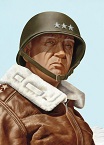Ambassador
Posts: 1674
Joined: 1/11/2008
From: Brussels, Belgium
Status: offline

|
quote:
ORIGINAL: Phoenix100
I am just graduating off CS, TMW and Guadalcanal and thinking also of starting against the AI scenario 1. These are useful hints. Thanks. Nothing quite deadens the shock, however, of sitting out the first 7 Dec attacks (ten minutes for that AI turn, say) and then being suddenly just left alone, with all that map and all those units and bases in front of you, staring speechlessly at the prospect of it, all the time considering that it takes me at least fifteen minutes to complete a turn in which something is happening (in many turns there's nothing to do, true...) in even those smaller scenarios, and hence - how long is it going to take me to even get to grips with everything I'm looking at in the full historical scenario, and then how long to do a turn, and then...to complete the first year ONLY - 365 of those turns....it's staggering... This has to be THE game for the hardcore grognards... my hat is off to them all.
My couple of advices before you embark in a genuine first full campaign :
1) just run the scenario for a dozen turns or more, even a month or two, without worrying about anything. Move a couple of TFs, issue a couple of orders to squadrons or to LCUs, just look around to see how things evolve. Don’t look at this run as a real game, just familiarize yourself with the rhythm of the game, and get a turn routine you’re confortable with. It’ll help you get a feeling of the scope and length of the game - and also spot a couple of adventures you shouldn’t embark upon (like tackling KB with 3 CVs...). A grand campaign takes at least a year to play, you may exercice some patience for a few days before embarking in such an adventure.
2) take that time to check the distances between various points, including alternative routes, you might get surprises. For example, one could think that routing a convoy from Cape Town to Karachi by Mombasa would be the same distance than the direct route, when it’s really 17 hexes fewer (which is important if you send fuel to Perth by passing through CT to avoid the map). Check the port and airfield SPS to know which hubs you should develop. Factor the needs of the Indian and Australian industries, and how many tankers have to be assigned to that task only.
3) take a good look at some of the devices upgrade paths, and production, mainly for the whole Commonwealth’s squads and AFV areas. Some of that is tricky, and you have to actively manage the pools - so, you need to know how many devices you get. Check the convoys you will receive in the war, they include a lot of devices which are essential.
4) check the on-map LCUs and the reinforcements. You’ll get overwhelmed at first, but look at them by sorting them through the nationalities and types. You’ll spot a couple of good units to buy with PP before they fill up (hint : check the Indian Armored units). Logistics is not limited to supply and fuel : political points have to be husbanded too, don’t pay extra when you can avoid. You’ll also see the units you’ll receive already affected to unrestricted commands (and won’t feel bad for the ones you’ll lose during the first six months).
5) take notes of what you see by doing the above points, formulate a global strategy, notably for your logistical train.
6) once you start your real campaign, follow the advice of saving every turn, to be able to go back. Take notes of what happened, of the orders you issued. Don’t try to do everything every turn, at first.
7) every time you think you’ve lost an important asset, open the reinforcement lists, and unwind.
|
 Printable Version
Printable Version












 Thanks, Ambassador, RangerJoe, Ian R, BBFanBoy, Alfred, et al. I really appreciate these gems that you veterans dispense from time to time. You may not always receive thanks, but know that at least some of us rookies feel immense gratitude for your efforts.
Thanks, Ambassador, RangerJoe, Ian R, BBFanBoy, Alfred, et al. I really appreciate these gems that you veterans dispense from time to time. You may not always receive thanks, but know that at least some of us rookies feel immense gratitude for your efforts.

 New Messages
New Messages No New Messages
No New Messages Hot Topic w/ New Messages
Hot Topic w/ New Messages Hot Topic w/o New Messages
Hot Topic w/o New Messages Locked w/ New Messages
Locked w/ New Messages Locked w/o New Messages
Locked w/o New Messages Post New Thread
Post New Thread